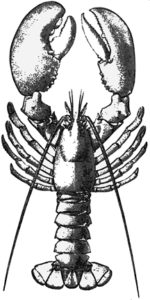by Shelley Denny
 The “peaceful” protest this fall in St. Peter’s between commercial lobster fishers from St. Peter’s and surrounding area and Chapel Island food fishers has been disheartening and infuriating. After 20 years of Treaty Day celebrations, it seems that our closest neighbors don’t accept Mi’kmaq food fishing rights.
The “peaceful” protest this fall in St. Peter’s between commercial lobster fishers from St. Peter’s and surrounding area and Chapel Island food fishers has been disheartening and infuriating. After 20 years of Treaty Day celebrations, it seems that our closest neighbors don’t accept Mi’kmaq food fishing rights.
The irony in the situation is that this hostility and arrogance occurred during Mi’kmaq history month, a month of celebration for Mi’kmaq accomplishments and recognition for our Treaties with the Queen. Mi’kmaq Treaty Rights have been proven to be valid again and again in the Supreme Court of Canada. The SPARROW decision (1990) guarantees our right to fish year-round for sustenance and ceremonial purposes. Our Treaties are valid. Accept it. Let’s move on.
But what about conservation, you may ask? Lobster conservation in this region is not an issue. Lobster stocks around Cape Breton are still reasonably healthy.With at least 59 licenses in LFA 29 at 250 traps per license, that amounts to 14,750 traps set in the season that are hauled nearly every day for 9 weeks. Does anyone actually think that 250 traps set by Chapel Island food fishers for two months is going to drive the lobster population to low levels? Not likely. It’s not a free-for-all. It’s a traditional food fishery. In these debates no one ever mentions the non-Native cottage harvest (also known as “poaching”).
Chapel Island and First Nations in general have been more than cooperative by adhering to commercial lobster fishing regulations for that area. In particular, we respect the minimum legal carapace length restriction, release female lobsters carrying eggs and newly molted lobsters back into the water, and report our landings to Department of Fisheries and Oceans (DFO). Chapel Island fishers have been generous in accepting a reduction in the number of traps they set by 40%, even if, by law, they don’t have too. I wouldn’t like to see the commotion the commercial lobster fishers would put up if they were faced with that drastic a reduction.
Mi’kmaqin Cape Breton have been involved in lobster conservation and marine habitat research for many years. We have invested years of research on lobster in the Bras d’Or Lakes and have installed artificial reefs to increase lobster habitat there. Through a Memorandum of Understanding with the Lobster Science Centre in PEI, we have made a commitment to continue research on this important species.
While Mi’kmaq fishers have the legal right to add up to 1000 more traps to their food fishery, in recognition of conservation of the lobster species, we don’t. And although we have licenses to fish in Areas 27 and 30, Mi’kmaq fishers do not exercise those rights. Eskasoni has five licenses that they don’t fish out of conservation concerns.
In Areas 27 and 30, non-native fishers place 158,250 traps in a season. In the same area, Mi’kmaq place approximately 350 traps for their food fishery (out of an allowable 1250 traps.) Do the math.
NOTE: Shelley Denny, has received approval from the Chiefs to develop an Unama’ki food fishing management plan for lobster.
shelley.denny@uinr.ca
